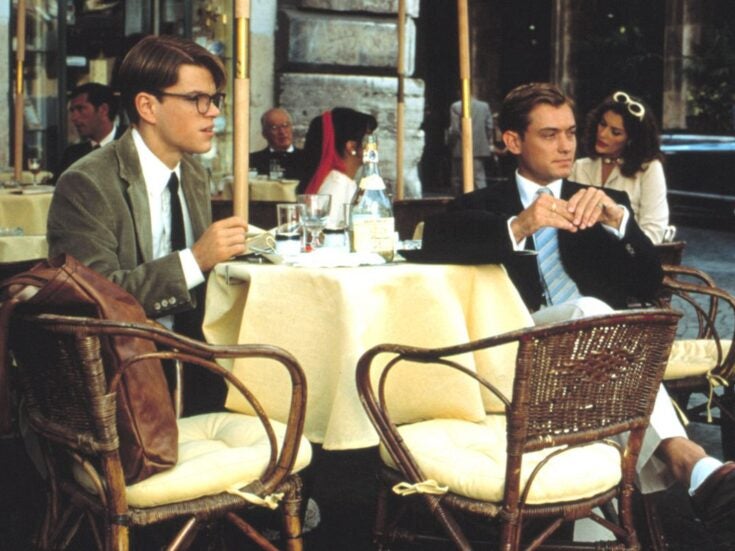Spear’s spikiest columnists on the latest gossip and goings-on in the City and beyond
Seal Clapping
What connects Garrard (the jewellers), DAKS (the tailors), Applied Sweepers (suppliers of outdoor sweeping machines) and the Fen Ditching Company (does what it says on the tin)? They all hold Royal Warrants for supplying HM et al with the goods, products and services which keep the wheels of the Royal Household nicely oiled. Literally, in one case: Mike Rowland (wheelwrights and coachbuilders) has one.
These brands came to Hedgehog’s attention when the Coronation Festival was announced. Running 11-14 July in Buckingham Palace’s gardens, two hundred of our best brands — all Royal Warrant holders, but more on the luxury side than the wheelwrighting side — will show off their wares.
Not that these wares are always appreciated in the UK, says Richard Peck, secretary of the Royal Warrant Holders Association: ‘It’s the old thing: a prophet isn’t without honour except in his own home.’ Abroad, however, the Royal Warrant is highly respected, especially in thriving markets like China, Korea and Taiwan.
Browsing the RWHA’s website, the diversity of membership — beyond Gieves & Hawkes and Holland & Holland — is a pleasant reminder that Britain is still a productive place: other holders (not at the festival) include Flying Colour Flagmakers; Toye, Kenning & Spencer (gold and silver lace); Rory Matthews (interactive media and websites); Serena Richards (silk flowers and arrangements); and Forbo Flooring (lino).
The festival begins with a Royal preview day on Thursday 11 July, which is by invitation only. Perhaps you’ll even see HM trying a small paper cup of Twinings’ latest blend or nibbling a free truffle from Prestat.
Tickets available at coronationfestival.com

Bulletproof?
Thursday: Hedgehog turns up at the Saatchi Gallery Mess to meet Noah Horowitz, director of the Armory Show, America’s most prominent Contemporary art get-together, which is on 7-10 March in New York. No Noah. A quick call; a foreign ringing; oh, the interview’s tomorrow?
Friday: Noah Horowitz, returned from a whistle-stop tour of Europe which has left him looking a little fatigued, is at the Mess most of the way through a peppy Coke.
He offers me a postcard for the fair, which is celebrating a quasi-centenary this year. In 1913, Modern art hit America at the original Armory Show (so-called because it was held in a National Guard weapons store) after Arthur Davies and Walt Kuhn decided to bring across the works delighting and shocking Europe. Pieces by Matisse, Kandinsky, Picasso and Duchamp, including his volatile Nude Descending a Staircase, all arrived and, as The New Criterion recently wrote, ‘No admirer of modern art can help but dream of walking through those galleries.’
Jump to the mid-Nineties and the Gramercy International, a hotel art fair in New York set up by gallerists including Matthew Marks and Paul Morris. The Gramercy moves to the Armory on Lexington Avenue and inherits the name. (Now it’s at Piers 92 and 94.) So it the Armory’s centenary, after a fashion.
What can the Armory of today learn from the Armory of 1913, I ask Horotwiz. ‘The Armory Show as an exhibition/commercial enterprise was shocking, people despised it. Now we’re in this kind of global community, very postmodern, everything’s already been done in a way, [but] I think a fair in New York City can still be fresh, introduce people to ideas, to an audience in a way that we do an amazing job of.’
One of the major complaints about the Armory is its size: two years ago it was 290 galleries, and this year it will be 210. If you consider that Frieze has 175 and it’s impossible to get round with any meaningful appreciation of the work, the engorged Armory must have been hellish. Horowitz, whose new book Art of the Deal looks at how art, money and globalisation interact, says size is no longer everything: ‘The age of the ever-expanding art fair I think is maybe not the right model for the next model. You need a different model, you need something more in tune with the fact that there is in many ways an oversupply of fairs and galleries can’t do them all.’
The Armory has a whippersnapper at its heels: Frieze held its first, well-received New York fair last year. So did he enjoy it? Pause. ‘Did I enjoy Frieze New York? Yeah, I mean, look, they produced a very nice fair in a part of New York that hasn’t even had an art fair before, and I think they did a commendable job in the venue and it was widely praised as a site, as a space, great catering, great food, and there was a great group of galleries, so I enjoyed Frieze but I go to a lot of art fairs and enjoy [them].’
He points to the Armory’s easier location — not on a nearby island but in Midtown — and its long-standing institutional and collector relationships, but with controversy over its ownership (a recent deal to sell it to art publisher Louise Blouin looks like it’s fallen apart) and Frieze in the ascendant, it’s not clear the Armory is launching into its second ‘century’ with as much vigour as it did the first.
I’m Loving Angels Instead
If this country is ever going to get back on its economic feet, it won’t be thanks to the government and it won’t be thanks to the banks. Jobs, profits and (consequently) taxes are generated by innovative start-ups becoming bigger players, and the only people steadily investing here, in the sub-£2 million sector, are angels.
The problem is that angel investors can too often get the mix of enthusiasm and cool-headed business sense in the wrong proportions: with a bit of spare cash to spend and a rather trendy young business making digi-widgets hungry for it, they forget the logic and financial nous which made them successful entrepreneurs in the first place. Even if they can temper their spirit, angel investing is still a fraught pitch.
For all these reasons — and several more — the arrival of Richard Hargreaves’ How to Become a Business Angel, sure to become the authoritative book on the subject, is to be welcomed. Comprehensive, written in clear English and benefiting from Hargreaves’ long years in VC and angel investing, the book runs from alpha to omega, covering everything from how to select a company to the best tax treatments of all your new lucre on exit — or, of course, what to do if it goes wrong.
Hargreaves has marshalled necessary facts about and research into angel investing — for example, angels in America invest into 60 times as many companies as VCs — with anecdotes from his and others’ experiences and his own opinions, not couched in emollient terms but simple, strong and clear. The angel investing groups on LinkedIn, for example, are ‘full of naïve and unattractive-sounding fundraising opportunities’. Unafraid of his mistakes, like Luke Johnson in his entrepreneurs’ guide Start It Up, he confesses to having been conned (his word) by a rogue operator.
He can also turn a happy analogy: ‘Matching angels and entrepreneurs is a bit like young people dating — both parties are looking for a compatible partner, sometimes desperately.’ Before any angel dallies with a seductive young entrepreneur, they’d be wise to go once round the dance floor with Hargreaves and his new book.
How to Become a Business Angel is published by Harriman House (£35)

Out of the Shadows
Good news from the Contemporary Art Society, which has been a shadowy but important presence in the London art scene: it’s opening a public space with talks, exhibitions and events after a century of supporting the arts from the background.
CAS’s new home, at 59 Central Street, near Old Street, is a response to the financial crisis and the consequent government arts cuts: if the government wants to see that people enjoy Contemporary art, that it makes a valuable contribution to our cultural lives, then let them see this. So, last year’s Turner Prize winner, Elizabeth Price, showed video work and gave a talk in January, and Stephen Nelson will put on a display, too. Other artist talks will follow, perhaps by CAS beneficiaries such as Jeremy Deller or Bob and Roberta Smith.
As well as the blowsy embrace Hedgehog would give any new gallery and art space, CAS’s decision is particularly delightful for two reasons: first, it has intensely good contacts with the art world, and so will be able to secure great speakers and shows.
And second, it will allow more people to appreciate quite how important the Contemporary Art Society is to our art scene. For a century now it has been buying work from young artists for museums and galleries in the UK — 8,000 pieces in fact, including all the modern British greats. It also convinces philanthropists to donate from their private collections.
Late last year Hedgehog went to a dinner at the V&A — a long table for 60 people set in the beautiful sculpture gallery — to celebrate twenty years of the CASS Sculpture Foundation near Chichester. Well, Eric and Jean Cass, through the brokering of CAS (nominative determinism in action), have now donated over 300 sculptures, including Hepworth, Moore, Paolozzi and Picasso, to public institutions.
If their new building helps us to appreciate quite how wonderful the Contemporary Art Society is, it will bring a double benefit to the art world and wider society.

Going for Gold
Hedgehog found himself in Stratford way back during the Paralympics. Nothing unusual there, you might think: seemingly half the world made its way to the Olympic Park to witness amazing feats of human capacity. But this was for a podium of a very different height: 42 storeys, to be precise.
Harry Handelsman, the property developer who brought loft living to London, squired Hedgehog over on the javelin train from St Pancras (seven minutes if you please) after lunch at the Gilbert Scott in the St Pancras Renaissance hotel, another one of Harry’s projects and a rather impressive phoenix to boot.
With this Manhattan Loft Gardens tower, E20 is acquiring a patina of transatlantic glamour with super-modern design and some Gulfi ambition: the building has been conceived by Skidmore Owings & Merrill (SOM), which created Dubai’s Burj Khalifa, the world’s first 800-starred hotel. What makes the building impressive (and frankly frightening) to look at, even as a model, is its exquisite double cantilevering; this allows the tower in two sections to hang unsupported at one side. In the space SOM has stashed one of the building’s three gardens.
There continue to be rumblings about the residential qualities of Stratford, but anyone who has been attentive to the supply materialising over the next few years will understand that it is buildings like MLG which will draw in those young professionals who want to pierce the skyline in style.
Coffee Mate

I could spend a couple of quid on another latte at my favourite coffee house, or save it. But how would I go about saving such fiddly amounts? Write them down on a scrap of paper, probably lost in the washing machine later? What about the cigarettes I’m not buying thanks to my ridiculous resolution — how would I keep track? What if there were an app for that?
January saw the launch of a new iPhone app, OrSaveIt, the creation of two young entrepreneurs, Alain Desmier and Mike Laming. Realising, in a coffee shop of all places, that we’re missing out on the micro savings that could add up to more substantial spends, they’ve built an app that does just that: you set a goal (a new TV, a holiday or even a new car), then spend seconds saving each time you think: ‘I could spend that — or save it.’
‘The average person spends £2,891 on impulse buys every year,’ Alain explains. ‘OrSaveIt gives you the opportunity to save on anything, anywhere, and has gentle email reminders with helpful tips, encouraging you to keep saving. This is a soft-touch “nudge” approach to changing people’s behaviours.’
Keep an eye on these two: Alain caught the entrepreneurial bug taking LeadPoint UK, then the second-fastest-growing digital firm in Europe, from start-up to acquisition in four years. Mike co-founded his first start-up, aged 21, in Silicon Valley, funded by the Y-Combinator accelerator programme that has produced Dropbox, Reddit, Xobni and many other multi-million-dollar successes. After returning to the UK, he’s since been heavily involved in the tech start-up scene in London.
Alain and Mike have huge plans for the future of OrSaveIt but were reluctant to give too much away too quickly: ‘A little at a time…’ they said.
Will Bentinck
orsaveit.com @alaindesmier @mikelaming






